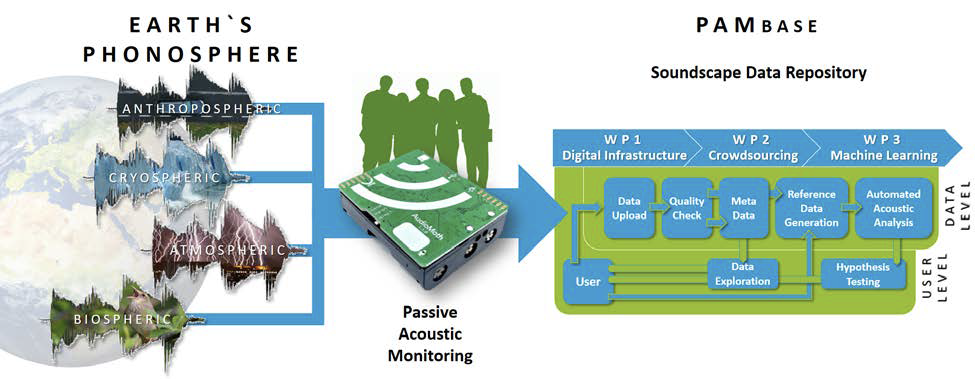PAMBase: Towards standardized soundscape recordings and analyses in Earth System Sciences
Passive acoustic monitoring is an effective method for tracking a variety of phenomena in the Earth System Sciences, whether they are devastating earthquakes (lithosphere), singing whales (biosphere) or human transportation (anthroposphere). However, we lack common databases and software tools for an integrated analysis of the acoustic information gathered across the different spheres. We aimed to deliver an operable software tool for inter-disciplinary acoustic analyses, and to engage the community around a roadmap for standardized workflows in passive acoustic monitoring. We present the front- and back-end of our tool based on an open-source ecoacoustics platform along with the functionality to allow the participation of the general public and the execution of deep learning algorithms to automatically identify bird species in sound recordings (Media 1). We also 1) surveyed user needs across the NFDI4Earth and NFDI4Biodiversity consortia; 2) present guidelines for data quality control, standardisation, and sharing; and 3) propose future directions for the technological and methodological development of common databases and software tools. Although we were not able to comprehensively assess or federate the Earth System Science community, we present clear improvements for the software-based acoustic data workflow used by the biogeographical research community.

Resources
- PAMBase/EcoSound
- Roadmap (Zenodo)
- Code Repository (Github)
- Platform Documentation